UNEXPECTED STORE EXCEPTION is a Blue Screen Stop Error on Windows 11/10 that indicates that the store component caught an unexpected exception. Out of many potential causes, we have narrowed it down to a few specific causes for this error. This can be your Antivirus Program installed on the computer, outdated hardware drivers, an error in the file system, issues with the lock screen app, or output to an unexpected port. Today, we will do our best to fix this issue.
The UNEXPECTED_STORE_EXCEPTION bug check has a value of 0x00000154. This bug check indicates that the kernel memory store component caught an unexpected exception.
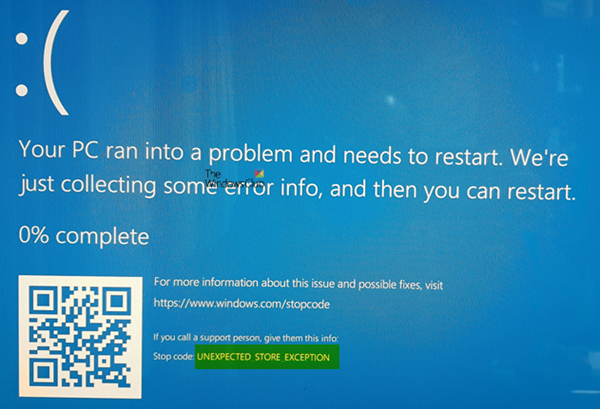
Fix UNEXPECTED STORE EXCEPTION Blue Screen on Windows 11/10
If you face an UNEXPECTED STORE EXCEPTION 0x00000154 Blue Screen error on Windows 11/10, follow these suggestions to fix this Blue Screen:
- Update your display driver
- Run SFC & DISM
- Turn off Fast Start-up
- Other suggestions
Let’s deep-dive now!
1] Update your display driver
For this, you will have to need to boot in your computer to the Safe Mode.
Now, the best practice for you should be to go to the website of your manufacturers like NVIDIA, AMD, or Intel. Go to the section called Drivers. And download the latest definitions from there.
After completing the download, just install the driver and reboot your computer.
Alternatively, after booting into the Safe Mode, open Device Manager.
To open the Device Manager, search for it in the Cortana Search Box or right-click on the This PC/Computer icon and click on Manage.
Click on Yes for the UAC or User Account Control Prompt you get. Now, in the list, double-click on Display Adapters.
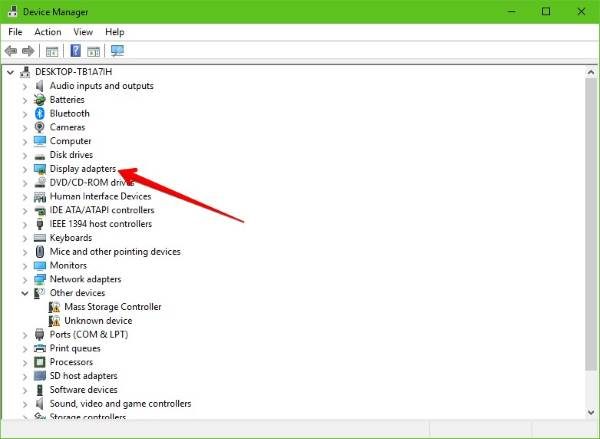
And under each sub-entry found under that entry, right-click on them and click on Uninstall Device. Then, Reboot your computer.
Finally, go to the Settings app, and Check for Updates in the Windows Update section.
2] Run SFC & DISM
Unexpected Store Exception error could be caused by corruptions in the Windows Kernel Memory. Fixing faulty system files could help.
For that, you will have to run the System File Checker from the Command Prompt window.
Press WINKEY + X button combo or right-click on the Start button and click on Command Prompt (Admin) or just search for cmd in the Cortana search box, right-click on the Command Prompt icon, and click on Run as Administrator. Click on Yes for the UAC or User Account Control prompt that you get. Then, the Command Prompt window will finally be open.
After that, type in the following command,
DISM.exe /Online /Cleanup-image /Restorehealth
Hit Enter.
Let the whole process be complete first.
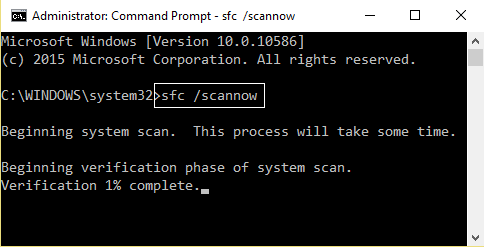
Now, type in the following command,
sfc /scannow
Hit Enter.
Finally, Restart your computer for the changes to take effect.
You should see: Windows Resource Protection found corrupt files and successfully repaired them, Details are included in the CBS.Log %WinDir%\Logs\CBS\CBS.log
But if you see: Windows Resource Protection found corrupt files but was unable to fix some of them, Details are included in the CBS.Log %WinDir%\Logs\CBS\CBS.log, then you should try running this command in the same Command Prompt window-
findstr /c:"[SR]" %windir%\Logs\CBS\CBS.log >"%userprofile%\Desktop\sfclogs.txt"
This command will open up the logs on your Desktop, and then you can manually look up files causing this error on your computer.
3] Turn off Fast Start-up
Fast Start-up is useful for someone who wants their computer to boot faster. This is especially useful for computers using a Hard Disk Drive. But by turning on this feature, when the computer boots, it might lag some drivers loaded when it boots up initially. So, this might be a potential cause for this error, too.
So, to turn Fast Start-up off, you will have to start by searching for Power Options in the Cortana Search Box and selecting the appropriate entry.
You can also hit the WINKEY + R button combinations, type in Control, and press Enter to launch the Control Panel. Then search for Power Options on the top right search field given to you and find it.
On the left panel, click on Choose what the power buttons do.
On the next page, click on Change settings that are currently unavailable.
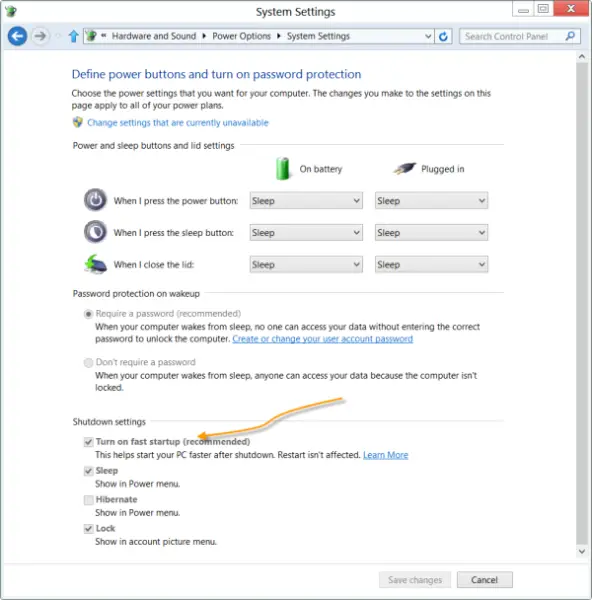
Uncheck Turn on Fast Start-up (Recommended). Reboot your computer for the changes to take effect.
4] Other suggestions
First, you can try checking the health of your drive in the Disk Management section. To open the Disk Management, right-click on the This PC/Computer icon and click on Manage.
Now, on the left side panel, click on Disk Management.
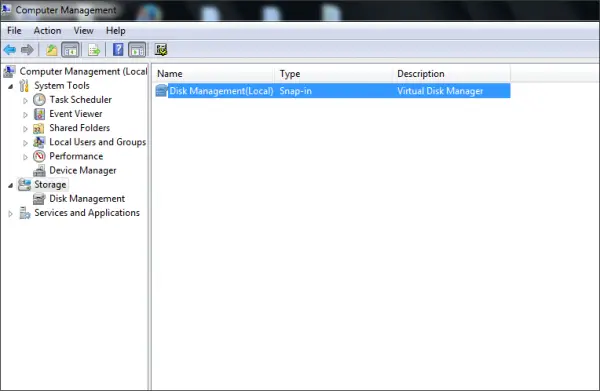
If it shows that all your partitions are healthy, you are good to go. Otherwise, your installed hard drive has some physical issues.
You may run the following command in CMD as well:
chkdsk /f /r
You can also try disabling your antivirus program. McAfee Antivirus has been found to be the main culprit in this issue. So, I would really recommend that you uninstall your third-party antivirus program.
To do this, open Control Panel. Click on Uninstall a Program. From the list of installed software, select your Antivirus program. Right-click on the entry and click on Uninstall. Follow the onscreen prompts.
Reboot your computer for the changes to take effect.
This would not leave your computer prone to vulnerabilities, as Windows Defender will still be protecting it in the background.
If nothing helps, you need to use Windbg to troubleshoot this Blue Screen error.
What can cause Unexpected Store exceptions?
While it is hard to pinpoint the exact reason for an exception, especially if it is related to a BSOD, it generally means there is a hardware or a driver issue. To figure it out, you must use the Windows debugger with the Crash dump analysis. One of the reported codes with the exception is 0x154, indicating that the kernel memory store component caught an unexpected exception.
How do you troubleshoot such Exceptions BSODs?
The closest method to troubleshoot is to remove pluggable hardware, replace it with another one, and check if the issue still occurs. Components such as RAM and external GPU can be replaced with a similar configuration and checked.
How do I update the drivers?
The best way to update the driver is using Windows Update or to use the OEM website to download the version of the driver that is compatible with the version of Windows installed on your PC.